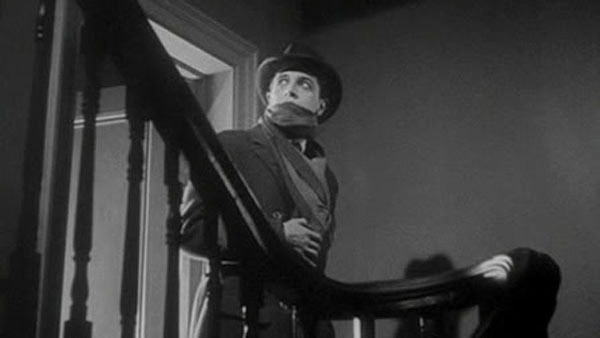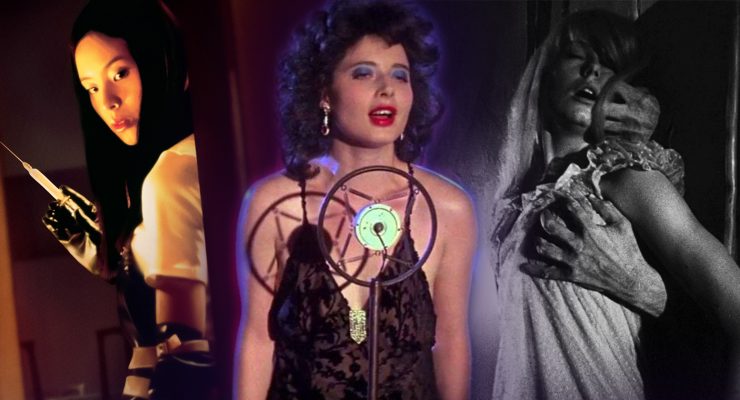Gary Collinson examines the silent film career of Alfred Hitchcock…
“In many of the films now being made, there is very little cinema: they are mostly what I call ‘photographs of people talking’. When we tell a story in the cinema, we should resort to dialogue only when it’s impossible to do otherwise.” – Alfred Hitchcock. ”
Legendary British filmmaker Alfred Hitchcock was one of only a handful of directors able to make the successful transition from the silent era of cinema. After graduating from the London County Council School of Engineering and Navigation, the teenage Hitchcock began studying art at the University of London while gaining employment as a designer with the Henley Telegraph Company. “From the age of sixteen on I read film journals,” Hitchcock said of his early interest in the cinema. “And since I was studying art at the University of London, Henley’s transferred me to the advertising department where I was given a chance to draw.”
In 1920 Hitchcock left Henley’s to work as an illustrator at the London branch of Famous Players-Laskey (which would later become Paramount Pictures), where he was responsible for producing the caption cards on a number of films, the majority of which are now lost to history. However, this experience certainly proved invaluable to the aspiring artist and when British company Gainsborough Pictures took over the studio Hitchcock landed a job as an assistant director under producer Michael Balcon.
In 1922 Hitchcock impressed Balcon with his screenplay for the stage adaptation Woman to Woman (1923) and the film went into production under director Graham Cutts, with Hitchcock serving as assistant director (during the production he also met his future wife Alma Reville, who was working on the film as an editor). In the same year Hitchcock was also given his first shot at directing, although the resulting picture Number Thirteen was left unfinished after it was unable to secure financing. He also stepped in to assist popular actor Seymour Hicks in completing the 1923 comedy short Always Tell Your Wife, after Hicks had fallen out with original director Hugh Croise.
From 1923–1925 Hitchcock continued to work as an assistant director with credits on The White Shadow (1923), The Prude’s Fall (1924), The Passionate Adventure (1924) and German production The Blackguard (1925), before Balcon approached Hitchcock with the offer of directing a picture himself. “Balcon told me that there was a proposal for an Anglo-German picture – another writer was assigned to the script and I left for Munich. My wife, Alma, was to be my assistant.”
The film in question was The Pleasure Garden, based on a novel by Oliver Sandys and featuring Hollywood actresses Virginia Valli and Carmelita Geraghty as a pair of London chorus girls whose husbands have departed for the colonies. Shot in Italy and Germany, the production encountered a number of misfortunes including problems with customs officials and transport, in addition to a severely tight budget. Although the film was completed in 1925 it did not receive an official release for two years, at which time the Daily Express described Hitchcock as a “young man with a master mind.” He then followed up his debut with The Mountain Eagle (1927), a melodrama centred on a young schoolteacher (Nita Naldi) who retreats to the mountains to escape the advances of her boyfriend’s father. Hitchcock himself described his sophomore effort as “a very bad movie”, although it did prove popular when released in the UK. Sadly, there are no surviving prints of The Mountain Eagle.
“The whole approach to this film was instinctive with me. It was the first time I exercised my style” Hitchcock said of his third feature. “In truth, you might almost say that The Lodger was my first picture”. Based on Marie Belloc Lowndes’ 1913 novel of the same name, The Lodger: A Story of the London Fog centres on the hunt for a serial killer not dissimilar to Jack the Ripper, known as ‘The Avenger’.
The film is set primarily in the boarding house of Mr. and Mrs. Bunting (Marie Ault and Arthur Chesney), where a mysterious stranger (Ivor Novello) arrives and rents a room. The couple soon come to suspect Novello may in fact be responsible for the murders and begin to fear for the safety of their daughter Daisy (June Tripp) after she becomes romantically involved with the lodger. In addition to being described as the first true Hitchcock, The Lodger also marks the beginning of the director’s trademark cameo appearances and introduces many themes common to his work including the innocent man on the run.
The completed film was initially met with much resistance by the distribution company and producer Michael Balcon, who brought in Ivor Montagu to suggest changes. After sitting on the shelf for a number of months The Lodger was finally released in February 1927, with the resulting critical and commercial success helping to launch Hitchcock into the British film spotlight.
Following the success of The Lodger, 1927 would see the release of two further Hitchcock films. Firstly, he would reunite with Ivor Novello for Downhill (based upon a play the Welsh actor had written with the actress Constance Collier and edited by Ivor Montagu), which continued to demonstrate the director’s emerging visual style when it was released in October of that year. Also opening that same month was The Ring, Hitchcock’s first feature for British International Pictures and the only film in his back catalogue where he would receive the sole writing credit.
In March 1928 the up-and-coming filmmaker released a further two pictures: Easy Virtue, which was loosely adapted from the Noël Coward play and would prove to be the final collaboration between Hitchcock and Montagu in the silent era (Montagu would go on to serve as producer on Hitchcock’s early British classics The Man Who Knew Too Much, The 39 Steps, Secret Agent and Sabotage); and comedy The Farmer’s Wife, based on a play by Eden Phillpotts.
Hitchcock would release another comedy in August 1928 entitled Champagne, which he would later describe as “probably the lowest ebb in my output”. This was followed by the romance The Manxman, which he began just after the birth of his daughter Patricia and once again, felt disappointed with the final result: “The only point of interest about that movie is that it was my last silent one.”
With the success of 1927’s The Jazz Singer heralding the decline of the silent art form, Hitchcock’s tenth film was designed to introduce sound to the director’s arsenal. “What happened was that after a good deal of hesitation, the producers decided it would be silent except for the last reel,” he said of 1929’s Blackmail. “But since I suspected the producers might change their minds and eventually want an all-sound picture, I worked it out that way”.
Hitchcock’s hunch would prove correct, while measures taken to incorporate ‘that way’ included having English actress Joan Barry stand off-camera to read dialogue on behalf of German Anny Ondra, who would simply mime the words with her mouth. Blackmail was eventually released in both formats, simultaneously marking the end of his silent career and introduction to the ‘talkies’.
“The silent pictures were the purest form of cinema; the only thing they lacked was the sound of people talking and the noises. But this slight imperfection did not warrant the major changes that sound brought in. In other words, since all that was missing was simply natural sound, there was no need to go to the other extreme and completely abandon the technique of the pure motion picture, the way they did when sound came in.” – Alfred Hitchcock.
Gary Collinson

















